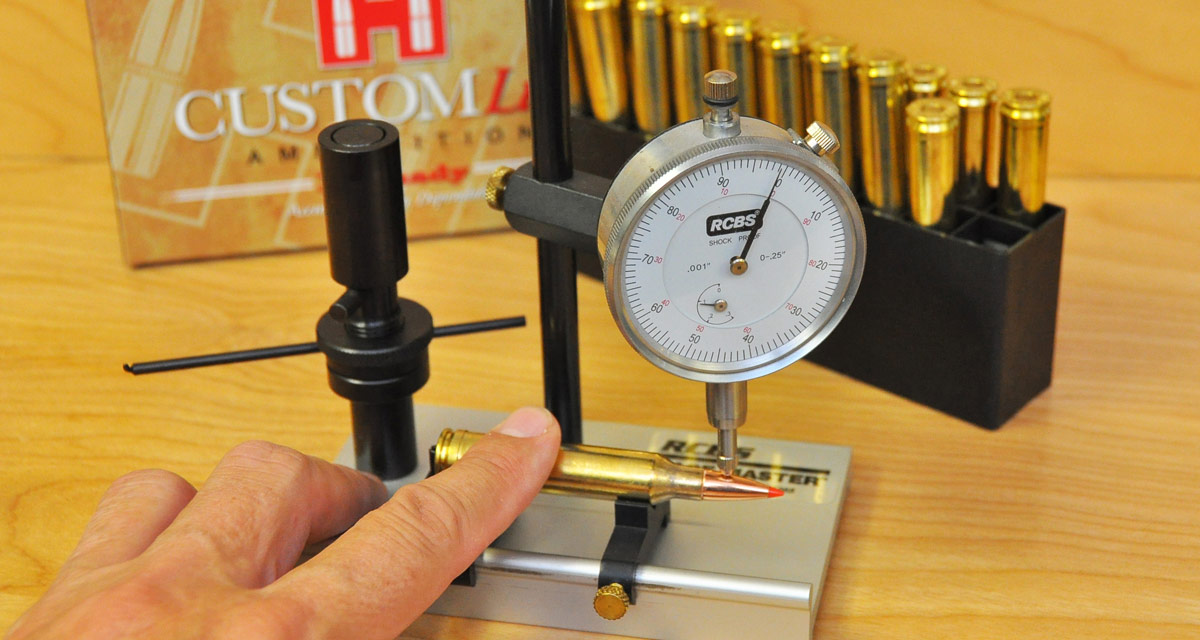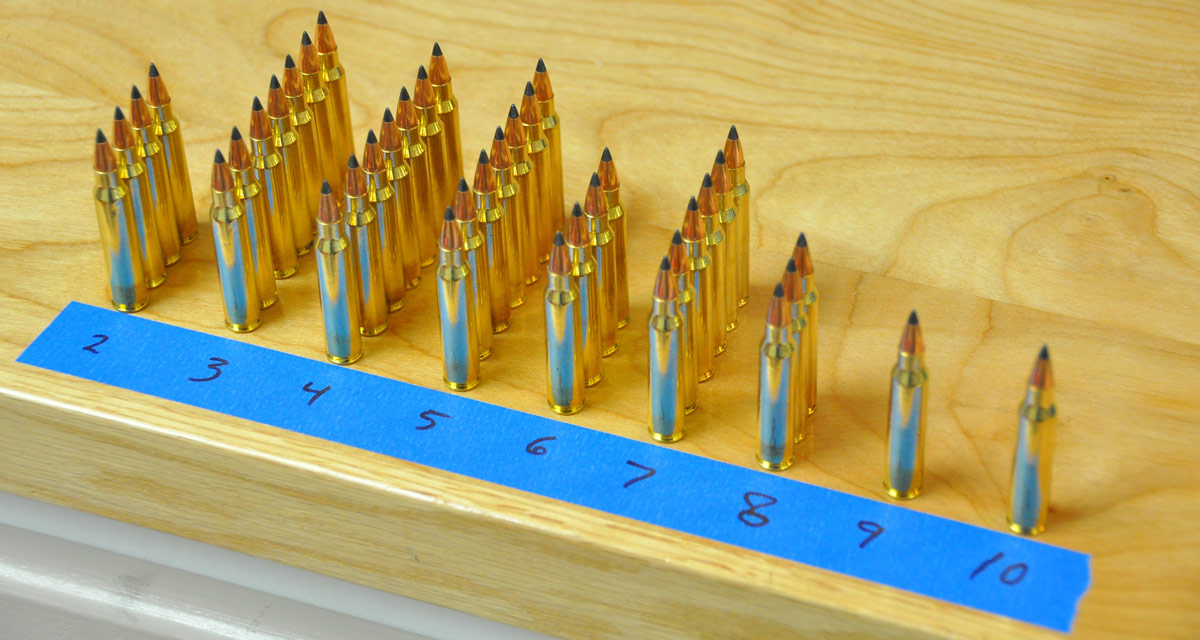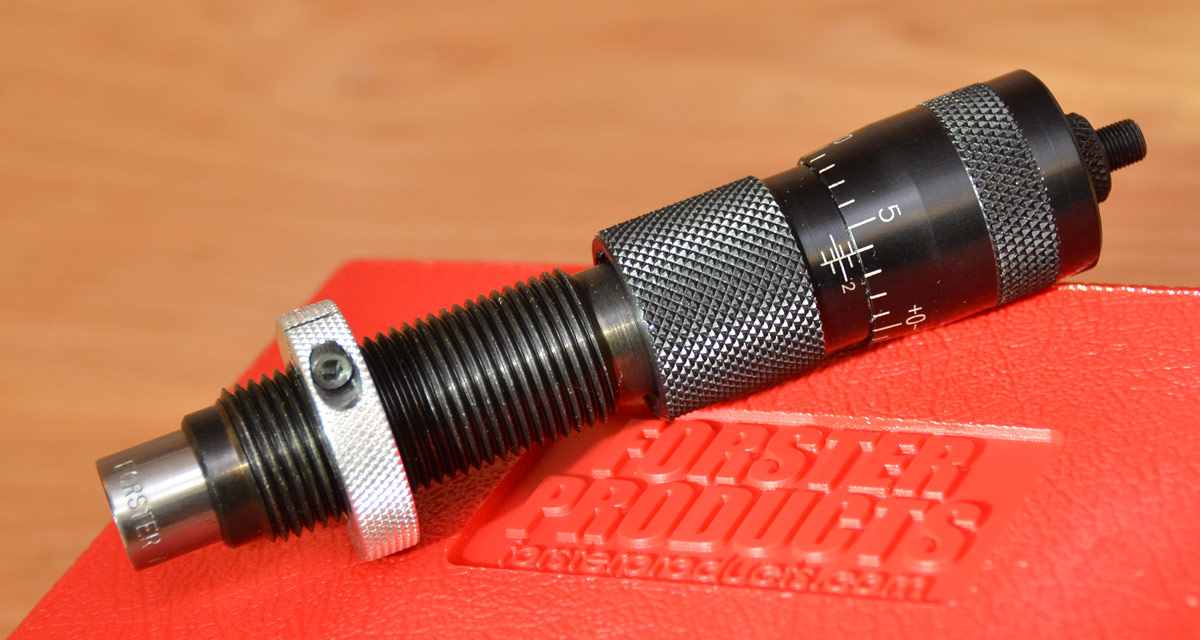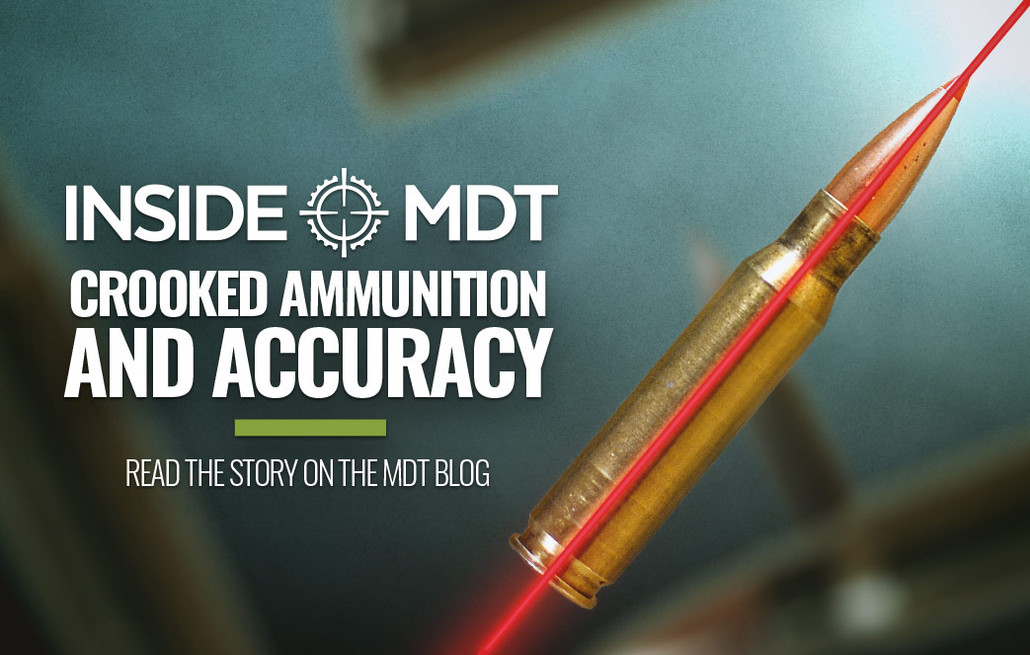Posted by Al Voth on 2022 Sep 22nd
Inside MDT - Crooked Ammunition and Accuracy
An old adage says, "Only accurate rifles are interesting," but I think it could be expanded to include "… and only straight ammo is accurate." This statement reflects the truth that good ammunition is required to get maximum accuracy from any rifle. But what constitutes good ammunition?
We all know that rifles are individual in nature and that what shoots great in one can be an accuracy disaster in another. However, there is one constant we can count on: Everything else being equal, straight ammo will shoot better than crooked ammo.
CROOKED RIFLE AMMUNITION
Can rifle ammunition be crooked? Yes, it can, and a center-fire rifle cartridge rolled across a tabletop and showing visible wobble at the bullet tip is an example of how bad some ammunition can be. However, in most cases, the extent to which a loaded round of ammunition is crooked cannot be easily seen. Determining the extent of bullet runout requires a measuring tool specific to the task. Using one of these tools regularly can be a real eye-opener to the accuracy potential of either handloads or factory ammunition.
More: Fire Forming and Loading 223 AI
But before getting into crooked vs. straight ammo, let's clarify that for hunters shooting large animals at average ranges, fussing about bullet runout is really unnecessary. However, for precision shooting applications, especially at extended ranges, it's reasonable to start worrying about crooked cartridges and their detrimental effect on accuracy.
MEASURING CARTRIDGES FOR STRAIGHTNESS
I've been using an RCBS Case Master tool to measure cartridge straightness for years. In use, the cartridge is spun on adjustable supports located at the base and shoulder. A dial indicator can then be set to read runout at either the case's neck or on the bullet. The deviation is measured in thousandths of an inch. As with any precision measuring device, a consistent and repeatable technique is necessary to get valuable readings.

An RCBS Case Master gauge measures bullet runout. This box of Hornady 7mm Remington Magnum all measures under .003" and proved accurate.
MANAGING EXPECTATIONS
The ideal goal when measuring cartridge concentricity is a reading of zero or no runout at all. Forget about achieving this regularly, as it can't be done consistently. Trying to get there with average quality handloading equipment or expecting factory ammo to achieve this standard is unrealistic. Instead, it's best to set a maximum tolerance that we expect ammunition to meet and strive to keep everything within those parameters.
More: Loading 6GT with Hodgdon H4350
Using commonly available handloading tools, if you can load ammo with a runout of less than .003", you're doing fine. I suspect that's the standard that quality-oriented manufacturers try to attain. With factory hunting rifles, the accuracy difference caused by this amount of runout won't be detectable.

Sorting 40 rounds of factory ammo for bullet runout produced these results, with the numbers on the tape indicating bullet runout in thousandths of an inch. This ammunition isn't particularly accurate, either.
FACTORS OF CARTRIDGE ACCURACY
In my experience, rifles are individuals, and some may be more forgiving in digesting crooked ammo than others. Cartridge runout is important, but it is not the most crucial factor. Factors such as uniform neck tension, tuning powder quantity, and overall cartridge length are more important in building accurate ammunition. Measuring neck tension is extremely difficult, and tuning powder quantity and overall length can only be done by extensive shooting. Measuring cartridge runout is easy, quick, and can be done at the loading bench, so it's worth paying attention to.
More: A Look at Reduced Loads
WHAT CAUSES CROOKED AMMUNITION?
A list of the potential causes for producing crooked ammo is long and includes defective dies, press, and shell holders. I was reminded of this recently when I started loading for a new rifle. The used dies I'd bought at a gun show produced sized cases with a consistent .015" runout at the neck. Swapping the neck expander assembly, a common culprit, didn't help either. A quick trip to the gun shop and a new set of dies brought that number down to a respectable .004" which shrunk further to about .001" when I started neck turning. Problem solved, and a lesson learned about buying used dies.

High-quality dies, like this Forster seater, help produce ammo with minimal runout.
Dirt or debris embedded in the wrong place on a shell holder or in a set of dies can frustrate a handloader's efforts to load straight ammo. Pulling dies apart and cleaning the internals can improve concentricity. It's one of the first things to try if a previously good set of dies suddenly starts producing crooked ammo. Likewise, the groove on a shell holder, into which the rim of a cartridge slides, is a great dirt collector and needs to be kept clean. A little dirt in the wrong place can cause cases to bend when forced into a sizing die.
If cases coming out of a sizing operation are straight, but seated bullets have too much runout, a common cause is a seating stem that doesn't fit the bullet tip properly. This is usually seen when seating a pointed polymer tip bullet. That pointy tip bottoms out inside the seating stem, and in that unsupported position, the bullet is free to wobble as it begins the trip into the case neck. Replacement, or even drilling a clearance into the stem's hollow tip, will cure this problem.
Cartridge runout is a dog that can be chased for a long time, leading to much frustration. The key is to set realistic goals based on your tooling and the level of accuracy your rifles need.
ABOUT THE AUTHOR
Al Voth calls himself a "student of the gun." Retired from a 35-year career in law enforcement, including nine years on an Emergency Response Team, he now works as an editor, freelance writer, and photographer, in addition to keeping active as a consultant in the field he most recently left behind—forensic firearm examination. He is a court-qualified expert in that forensic discipline, having worked in that capacity in three countries. When he's not working these days, you'll likely find him hunting varmints and predators (the 4-legged variety).


 CAD
CAD
 Euro
Euro
